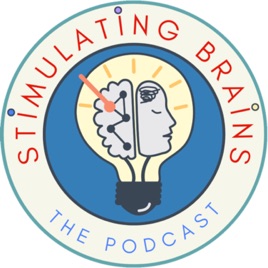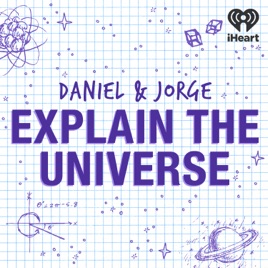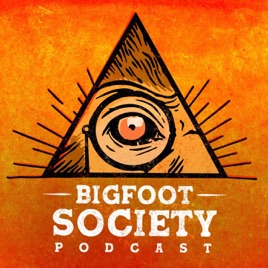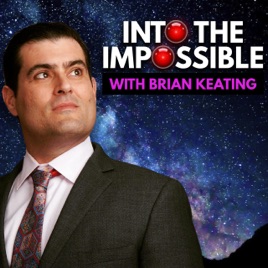
Advertise on podcast: Stimulating Brains
Rating
4.5 from
Country
This podcast has
47 episodes
Language
Publisher
Explicit
No
Date created
2020/05/24
Average duration
106 min.
Release period
19 days
Description
Andreas Horn interviews experts in the field of deep brain stimulation, noninvasive neuromodulation, functional brain imaging and neuroanatomy. Join us on our quest to interact with the human brain and thank you for your interest in science! Andreas Horn, M.D., Ph.D., is a neuroscientist and associate professor for neurology at Harvard Medical School.
Podcast episodes
Check latest episodes from Stimulating Brains podcast
#47: Marwan Hariz & Joachim Krauss – Toward a third wave of pallidotomies?
2024/02/23
Marwan Hariz and Joachim Krauss need no introduction. First, because they are famous, and second, because they have been on the show, before. In fact, Marwan Hariz is the first to have been on the podcast three times, first, as an early adopter and trustee in episode 3, second, together with Joachim Krauss and Christian Moll in episode 33, and now again with Joachim in the present episode. I met Joachim in Grenoble at a meeting celebrating the 30th year anniversary of STN-DBS. He mentioned that the last episode had been fun, and that it could be great to do an episode on the history of pallidotomies. Needless to say, I would always spend as much time as I can get to speaking with these legends in the field, so of course we went ahead with the idea. I think there are few people that know as much about the history of stereotactic surgery as Joachim and Marwan. In fact, recently, they have been designated as the Historians of the ESSFN and also of the WSSFN (the latter together with Rees Cosgrove).
In this conversation, I learned that pallidotomies came in two waves throughout history, and we may be witnessing the beginning of the third wave now with the growing popularity of focused ultrasound surgery. So sit back and enjoy while Marwan and Joachim take us on a ride through the centuries to shed light on the convoluted historical path of the surgical procedure we call pallidotomy.
more
#46: Todd Langevin – Establishing Deep Brain Stimulation - the industry perspective
2024/02/16
So far, in the podcast, I have been interviewing key opinion leaders from academia and clinical practice, and sometimes individual patients that graciously shared their insights after undergoing DBS. However, beyond patients and clinicians, there is a third component necessary for DBS to be successful, which are our partners in the industry. Without great industry leadership, it is hard if impossible to translate scientific findings into clinical practice. For instance, when the Grenoble team developed deep brain stimulation back in the 80ies and 90ies, they needed a strong industry partner to bring their breakthrough therapy into clinical practice. In some of the upcoming episodes including the present one, I will interview executives from the device industry.
Who better to start this journey with than Todd Langevin, who has been a key figure in the field of DBS and neuromodulation on the industry side. Following the success of Benabid’s team in Grenoble, inside Medtronic, Todd led the internal venturing team that pitched, developed and launched DBS, which is now an $800M business worldwide. So – in a sense – we may owe it to Todd’s team similarly as much as to the scientific and clinical team of investigators in Grenoble that DBS has become a therapy that is being applied, world-wide. During his 20 years at Medtronic, Todd grew the DBS business to a $350 million unit revenue. After a brief hiatus in the cardiac world, he moved back into the field of DBS to lead the startup Functional Neuromodulation as CEO, which aims at establishing DBS to the fornix as a treatment for Alzheimer’s Disease. Indeed, under Todd’s leadership, the company achieved a CE mark for the treatment in Europe. Finally, in 2021, Todd moved to Biotronik, where he currently is the President of the Neuromodulation Business.
more
#45: Mac Shine and Paul Cisek - Exploring the evolution, integration and complexities of the brain: basal ganglia, dopamine, and beyond
2023/12/07
In this special episode of Stimulating Brains, we dive deep into the intricacies of the human brain with two esteemed guests, Mac Shine from Sydney University and Paul Cisek from the University of Montreal. Building upon our earlier conversation with Mac in episode 9, this episode sees these brilliant minds sharing their insights on the basal ganglia, the role of dopamine, and the fascinating interplay between various brain regions. In addition, we explore the modulation of the thalamus by the basal ganglia, discussing its impact on both the cortex and the brainstem. Moreover, the conversation takes us on a journey through the evolution of the brain, examining the concept of the phylogenetic refinement approach. Join us in this intellectually stimulating episode as we explore groundbreaking concepts that could significantly impact both systems and clinical neuroscience.
more
#44 Jennifer Thomas & Michael Stanley - The creative spark: Switching on the inner artist in the face of Parkinson's Disease
2023/11/24
In this conversation with Jennifer ('Niffy') Thomas and Dr. Michael Stanley, we talk about how Niffy became an artist after undergoing DBS surgery to treat her early onset Parkinson's Disease. Dr. Michael Stanley is a cognitive neurologist at the Brigham & Women's Hospital and has special interest in art and the brain: He studies how lesions or other neurological conditions can lead to cessation of artistic behavior or how they can change the artistic style of artists. When he read about Niffy's case, he reached out to her and the two had multiple conversations about it. In preparation to this conversation, we were in contact with Dr. Paul Krack (Bern) who has studied and published upon similar cases in which DBS surgery changed or initiated artistic behavior. There is so much we can learn from Niffy and I am very grateful for her taking the time to share her story: Indeed, in her youth, Niffy did not enjoy art class at school and never had a particular interest in painting. She expressed herself differently: Via athletic competition or by playing the piano. But after coming home from DBS surgery in 2019, all of a sudden, there was this imminent urge – to paint...
more
#43 Vanessa Milanese - Bridging Anatomy and Neurosurgery: A Deep Dive into White Matter Dissections and Legacy of Dr. Al Rhoton
2023/10/19
In this conversation with Dr. Vanessa Milanese, we cover the importance of anatomy in neurosurgery and explore her intriguing work in both fields – and how they cross-informed one another. Vanessa is a functional neurosurgeon at A Beneficencia Portuguesa Hospital in São Paulo, Brazil and holds an adjunct assistant professorship of neurosurgery at Mayo Clinic in Jacksonville, Florida. We talk about her stellar work in combining her neurosurgical activity with anatomical work – which involves dissections of the white matter of postmortem brains using the Klingler’s method. We will talk about the rare community of neurosurgeons involved in similar activities, world-wide and the big influence Dr. Al Rhoton had on the field and on Vanessa’s career. We thoroughly enjoyed this conversation and learned a lot – and we hope you will enjoy it as much as we did! Thank you so much for tuning in!
more
#42: Kullervo Hynynen – A conversation with the inventor of MR-Guided Focused Ultrasound
2023/10/13
In this episode, we sit down with Dr. Kullervo Hynynen, a key figure in biomedical ultrasound and image-guided therapeutics. Starting from his academic roots at the University of Aberdeen to his current roles at the Sunnybrook Research Institute and the University of Toronto, Dr. Hynynen has played an instrumental role in advancing medical imaging.
He has been at the forefront of investigating the use of focused ultrasound for various medical procedures such as non-invasive surgery, vascular surgery, targeted drug delivery, and gene therapy. Without his groundbreaking contributions, the medical field might not possess the capability to execute MR-guided focused ultrasound surgeries today.
For those curious about the specifics of his contributions, the Focused Ultrasound Society has a comprehensive website detailing milestones in the therapy's development, where Dr. Hynynen's name frequently appears.
Dr. Hynynen leads an extensive group at Sunnybrook, comprising approximately 50 to 100 members. These professionals span across the vast spectrum of focused ultrasound applications in both animals and humans.
more
#41: Christelle Baunez – The role of the subthalamic nucleus in brain stimulation
2023/10/07
In this intriguing dialogue with Dr. Christelle Baunez, a neurobiologist at Aix-Marseille University, we discuss a mysterious and small structure, the subthalamic nucleus. Christelle is known as the STN woman in France, due to her dedication to study this structure over the years. Christelle is a pioneer in the side effects related to STN stimulation in Parkinson Disease patients. Now, she is working towards understanding how STN stimulation can help people with addiction. We cover, with an historical perspective how STN became an interesting brain stimulation target, their advantages and disadvantages of its stimulation, side effects related, its connectivity and current and future applications. In addition, we discuss some of her recent fully unpublish experiments, like STN stimulation in cocaine addicted macaques and beyond. We also cover Christelle’s advocacy for animal research and its important role to push the boundaries of neuroscience. Finally, Christelle shares her passion for photography and how STN should be included in the reward circuit. This conversation was an incredible learning experience for me, and I believe it will be for you too. Thank you so much for tuning in – for this round episode number 41 of stimulating brains!
more
#40: Casey Halpern – Novel indications and approaches to invasive neuromodulation and neuroscience
2023/09/22
In this engaging conversation with Casey Halpern, a functional neurosurgeon at Penn Medicine. Casey is a pioneer in both deep brain stimulation and focused ultrasound and with his lab has recently had some fantastic breakthroughs, especially, but not exclusively in the field of loss-of-control eating in severe obesity. We cover a lot of ground from optogenetics at Stanford, basic science research about the nucleus accumbens and translation of findings into patients, serendipitous discoveries in humans, to stereo-EEG procedures in patients with epilepsy. We discuss what made his recent Nature paper about an appetite mediating circuit in the human hippocampus so special, how he took his findings from 2013 in rodent work – across several stages – into a human clinical trial for eating disorders. We also cover Casey’s ongoing trial in DBS for OCD, where he adopts an approach to probe the brain with multiple electrodes to then identify optimal target areas for each individual patient – in line with other current advances of psychiatric neurosurgery. We also talk about MR guided focused ultrasound and the potential future of this treatment option in a tight relationship with DBS. As always, I learned a lot in this conversation and I hope you find it as enjoyable as I did. Thank you so much for tuning in – for this round episode number 40 of stimulating brains!
more
#39: Nico Dosenbach – A BOLD Challenge to Penfield’s Homunculus based on resting-state fMRI
2023/09/18
In this engaging conversation with Dr. Nico Dosenbach, a clinician-scientist at Washington University, we dive into his personal journey from the Black Forest in Germany to his adventures in the US. Nico generously shared insights into his educational and career path, recounting his experiences studying biochemistry in New York City, making the decision to pursue an MD/PhD, and eventually specializing in pediatric neurology.
The conversation delved into his early days as a researcher at Washington University in St. Louis, during the pioneering early days of resting-state fMRI.
Nico also discussed the significance of data collected as part of the Midnight Scan Club. This work collected hours worth of data from ten individuals using comparably long and repeated fMRI scans and led to most of the seminal work of the Dosenbach lab. As Nico lays out, the reason is intriguing: If one sees an unexpected finding on high quality data, one would not as easily attribute it to noise. More likely, one would follow up and try to understand the finding better – as was done in numerous of Nico's papers.
Nico tells us how practical it is to wear a pink cast around ones dominant arm for a while – and why one would want to do such a thing as an fMRI researcher. Finally, we talk to Nico about two of his recent groundbreaking papers which were both published in Nature and how it came about that he challenged a long-standing "truth" in neuroscience: The model of the motor homunculus established by Wilder Penfield.
more
#38: Espen Dietrichs – about Carl Sem-Jacobsen, the true inventor of subthalamic DBS in Norway
2023/09/10
In this conversation with Espen Dietrichs, we talk about the work of Carl Wilhelm Sem-Jacobsen, who almost certainly applied deep brain stimulation to the subthalamic nucleus chronically over weeks in 1958. Notably, this was ~40 years before the application of subthalamic DBS in Grenoble by the team of Alim Louis Benabid & Pierre Pollak (episode 4) following the pioneering animal work by Hagai Bergman (episode 17) and Abdelhamid Benazzouz who had demonstrated lesioning and DBS to the subthalamic nucleus had dramatic effects on cardinal motor symptoms in Parkinson's. Sem-Jacobsen implanted a series of electrodes into the basal ganglia of the brain of Parkinson's Disease patients starting in 1958, and in some electrodes labeled "near nucl. ruber" demonstrated dramatic effects on both tremor and bradykinesia. Espen Dietrichs spent many years researching this work and according to him, Sem-Jacobsen was "an inventor, not so much a scientist", so little was published. He showed a compelling film at the neurological convention in Oslo 1962, however – which had been lost for a long time. After years of investigation, Prof. Dietrichs could recover the film and a total of 9 boxes of material in a barn owned by the Sem-Jacobsen family in rural Norway. He takes us on this journey of investigation and scientific history, and also shares how Sem-Jacobsen built an ECG device that recorded the activity of Neill Armstrong's heart while taking the first steps on the moon, as well as an EEG device that measured brain activity of jet pilots and divers. We touch on conspiracy theories of "mind control", personal links to the director of the CIA and a hearing committee, that ultimately cleared the name of Carl Sem-Jacobsen long after his death.
more
#37: Jon Nelson – DBS for Depression saved my life: Defying Stigma in Mental Health
2023/08/17
In this compelling episode we delve into the inspiring story of Jon Nelson, a remarkable individual who has braved the depths of mental illness and emerged as a beacon of resilience and hope. In a heartfelt conversation with Jon, he shares his lived experience with DBS device as a transformative treatment for mental illness.
Against the backdrop of prevailing stigma surrounding mental health, Jon's journey unfolds as he not only navigates the challenges of his condition but also becomes an ardent advocate for change. Through Jon's experiences and storytelling, we hope to provide a perspective on the power of DBS in addressing mental health issues and breaking down societal barriers.
Tune in as we explore Jon's commitment to dispelling stigma, his unwavering determination to share his insights, and his profound impact on raising awareness about the potential of DBS in treating mental health disorders. This episode challenges preconceptions, celebrates triumphs, and sheds light on the extraordinary synergy between personal experiences and scientific advancements.
more
#36: Béchir Jarraya & Jordy Tasserie – Unlocking Consciousness: Neuromodulation, Neurofeedback, and the Future of Brain Science
2023/08/06
In this episode, we delve into the groundbreaking work of the Neuromodulation Lab at the NeuroSpin center, led by Dr. Béchir Jarraya. The lab’s mission is to evaluate brain modulation using pharmacological agents and electrical neurostimulation. Combining functional MRI with new neuromodulation techniques, they train awake macaques, with a unique mock-MRI process, to study consciousness-related domains. Their activities encompass MRI, electrophysiology, and 3-photon imaging to unlock the mysteries of consciousness.
more
Podcast sponsorship advertising
Start advertising on Stimulating Brains & sponsor relevant audience podcasts
You may also like these natural sciences Podcasts

4.4
427
84
The Origins Podcast with Lawrence Krauss
Lawrence M. Krauss

4.7
2136
580
Daniel and Jorge Explain the Universe
iHeartPodcasts

4.6
1674
462
Paranormal Mysteries Podcast
Paranormal Mysteries Podcast | Unexplained Supernatural Stories

4.3
254
1009
SpaceTime with Stuart Gary
Stuart Gary

4.5
243
385
Bigfoot Society
Jeremiah Byron

4.5
770
415
The Michael Shermer Show
Michael Shermer

4.8
188
404
Space Nuts
Professor Fred Watson and Andrew Dunkley

4.7
828
386
Into the Impossible With Brian Keating
Big Bang Productions Inc.

4.7
1606
260
Bigfoot and Beyond with Cliff and Bobo
Bigfoot and Beyond LLC

4.8
1134
102
In Defense of Plants Podcast
In Defense of Plants



